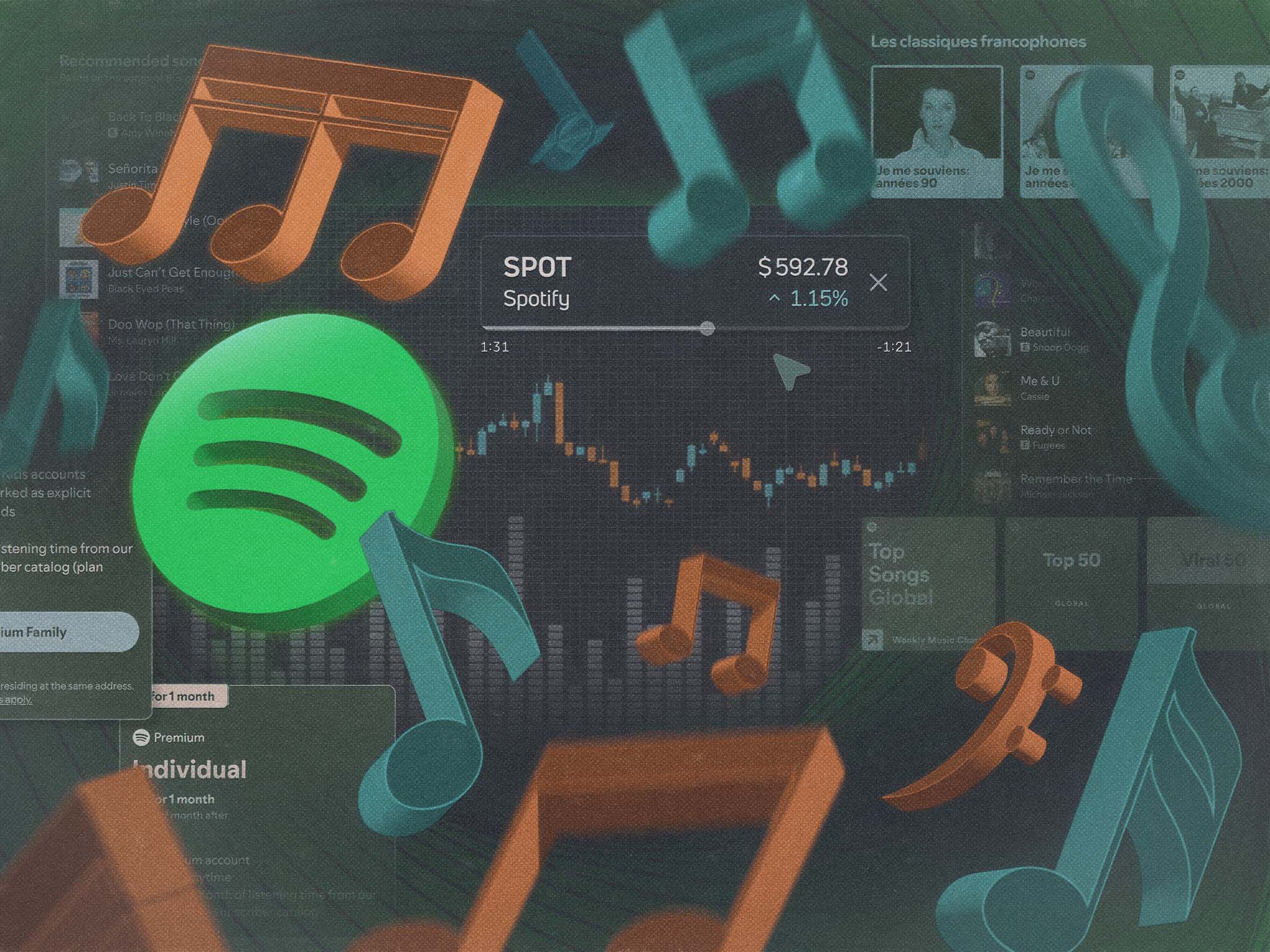After returning nearly 143% in 2024, it was reasonable to question if Spotify (NYSE: SPOT) shares could keep on rising. The company doesn’t enjoy the same economies of scale of a typical tech platform because user growth—a key metric analysts love to watch—results in increased royalty payments to the music labels that can keep pressure on the bottom line.
Spotify, for example, paid out a record $10 billion in royalties last year, more than 60% of its total revenue. That means the company has to look for profit in the margins, and that’s exactly what it’s been doing, riding a boom in video podcasts and focusing on premium offerings. The payoff has been records in monthly active user growth, subscriber additions, revenue, gross margin and free cash flow in the last quarter, and the first full year of profitability.
“It’s the result of countless improvements and tweaks we’ve made over the past two years,” founder and CEO Daniel Ek said on an earnings call last month. “It’s this ongoing commitment to incremental progress that ultimately adds up to something massive over the long term, even if the exact timing is hard to predict.” Cost-cutting efforts, including layoffs and reduced marketing expenses, also appear to have helped, despite some acknowledged disruptions to day-to-day operations.
Investors like what they’ve been seeing, with shares rising 31% so far into 2025, drastically outperforming the broader market with an S&P 500 that’s declined 2.7% over the same period. Ek said that 2024 had been a year marked by monetization, with 2025 to be typified by an “accelerated execution” of efforts to tempt users into pricier tiers with advanced features like high-quality audio and differentiated experiences for super fans.
The CEO said most profits would continue to come from developed markets in the near to mid-term, although he singled out Latin America as a large market that “can be a meaningful additive driver for both the revenue and profitability for both the company and the music industry holistically.” Meanwhile, advances in AI are helping the company control costs and sharpen engagement recommendations.
“We are also going all in on our core and investing in more music experiences on the platform,” Ek continued. “We think we can pick up the pace dramatically.”
While many of the new features to come look primed to help capture more revenue from Spotify’s big base of 675 million monthly active users, investors may find the most promising signs back in the balance sheet. The company saw its cost of revenue fall nearly four percentage points last year, and it’s also been able to raise prices without substantially increasing user churn. With incremental efforts starting to compound, Spotify may be able to keep on hitting the spot.




Comments